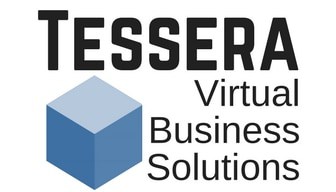Have you ever thought that you could accomplish something important at work if only you had _________? The “if only” syndrome is real. There always seems to be something that limits what you can accomplish. Constraints in business are inevitable.
Perhaps you don’t have enough time. Or you need a little more money to accomplish your goals. Maybe you could reach the finish line if there weren’t so many rules and regulations to navigate.
Not having enough of something you need to reach your desired result feels constraining, doesn’t it? But what if you looked at these limitations as pathways that actually HELP you get the desired results you need?
Let’s look at how having constraints in your business can spur you to faster and better decisions and some pretty creative results.
Abundance vs. Scarcity
Let’s face it. We are working in a world of abundance. If you don’t believe me, take a look at the cereal aisle at your local grocery store. A friend of mine tells the story of moving to the US after living in a third-world country. She was quite literally overwhelmed when she went to grab a box of cereal. There were so many choices that she was paralyzed by the decision and left the store with — you guessed it — no cereal!
Brands have learned that too many choices are not necessarily good for business. The “paradox of choice” states that the more choices we have as consumers, the longer we take to make a decision and the less happy we are with the final decision.
Look at Apple. They have a very limited product line with only a few choices available for each product. This simplifies the decision-making process and ultimately, the consumer is found to be happier with their purchase.
But what happens when you are not the consumer, but the producer and your resources are limited? Not ideal, right? We want multiple options laid out in front of us so we can move forward. We want plenty of time, available financial resources, and our pick of human capital to create the best product.
But what if we viewed scarcity as the road to innovation? What if having constraints on our resources meant finding fresh and creative ways to meet a customer’s need? It happens all the time.
Scarcity in Action
There are plenty of examples of how lacking something has led to discovery or invention.
During wartime, resources are scarce. But new technologies like gunpowder, radar, and specific medical technologies have come out of these times of crisis.
In agriculture, new technologies are developed when water or other nutrients are in short supply. Think irrigation. Or when a new variety of plant is developed to be better suited to a specific growing environment.
In business, new ways to automate tasks give an advantage to smaller organizations with fewer resources. Creating a more streamlined approach gives businesses a faster, more effective way to get their products to market.
Manage by Haiku
One clever way to think about taking advantage of constraints in your business is to manage by Haiku. In case you can’t remember back to your high school English class, haiku is a Japanese poem having seventeen syllables — no more, no less. The first line contains five syllables, the second seven, and the third five.
If you were assigned to write a haiku about how your time, energy, and money resources are limited, you would naturally be limited in what you could say. It makes sense that this would force you to draw from your most creative abilities to come up with an effective poem that communicates your thoughts.
(Or, you could use the innovative technology of artificial intelligence to write one for you…)
Within constraints' hold, Creativity unfolds, Success story told.
Or maybe this one…
Constraints pave the way, Creative forces at play, Success blooms each day.
You can pack a lot of meaning in just seventeen syllables. What would happen if you used this idea of using less to drive more innovation in your work?
- Not enough time? Release a minimum viable product (MVP) and seek feedback from your clients to make improvements.
- Not enough money to develop the product or service? Pre-sell to a select group of people so that the project gets to market faster.
- Not enough data or knowledge? Seek collaborators who can help you get where you are going.
- Lacking processes? Seek an expert who can watch you work and develop those processes from your current workflows.
Will Embracing Scarcity Work?
Is this whole idea of using scarcity in your favor viable? You be the judge. Here are some examples of companies born from a specific time of scarcity.
Think back to 2008, the year of the global financial crisis. Enter Airbnb. Yep, it was founded that year, disrupting the hospitality industry with what some would call a throw-away idea.
What about Uber? Founded in 2009, it was advertised as a cheaper and more efficient alternative to existing transportation services. And it gave laid-off workers a way to make some money in a tough economy.
And what about my favorite everyday tool for business — Asana? It was born in 2008 to give teams a way to collaborate and streamline their workload. Doesn’t that sound like a dream come true for any busy company already strapped for cash during a recession?
Adopting an Innovative Mindset
If embracing the reality of scarcity in your business is a legitimate idea, what can you do to begin transforming that scarcity into innovation?
Here are four places to start.
Strategy #1
Grab hold of the old adage, “Necessity is the mother of invention.” Take a long look (or re-look) at what your client truly needs. When you are meeting a need exceptionally, you will sell.
Strategy #2
Start thinking lean. When finances are limited, choosing to work from a lean mindset can not only save you money, but it can also give back time and energy resources as well. Take a cue from Paul Akers and ask your team to begin looking for ways to make tiny changes in their day-to-day and see what kinds of innovation surface.
Strategy #3
Free up resources by optimizing your current processes. There is always a way to improve your processes, and doing so will give you more time, energy, and money to innovate in other areas.
Strategy #4
Learn from your losses. Take a step back and use the feedback you receive from clients or lost deals to make changes — even small changes — to your marketing, sales process, or fulfillment.
Let’s Go!
Innovation is born from constraints. These limitations are a viable way to turn a negative into a positive. Barriers become catalysts. Challenges become springboards to creativity. Obstacles fuel solutions. It starts with training your mind to see scarcity as opportunity. Get in the habit of saying, “What does this make possible?”
You might also learn from:


